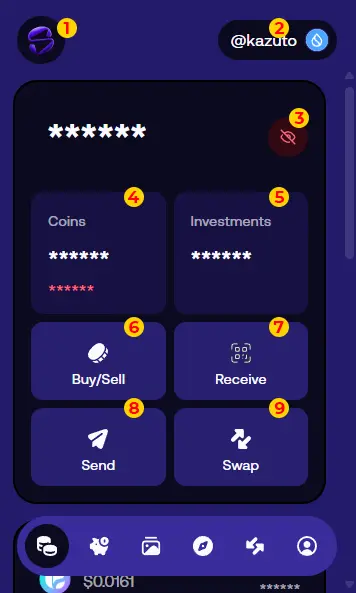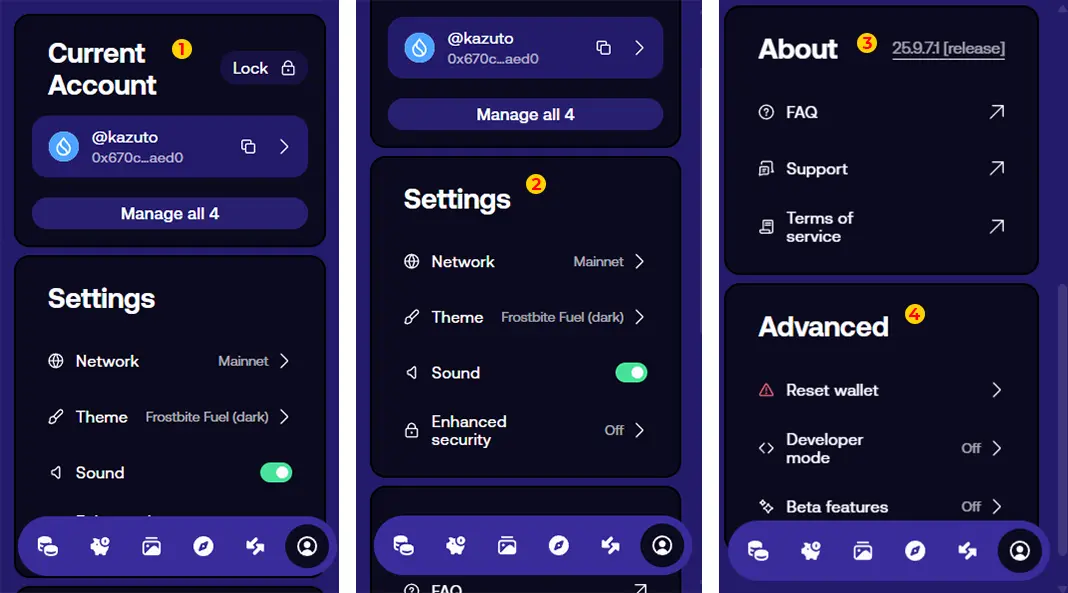How to use Slush Wallet
SUI is a scalable network built to support a large number of users with a near-infinite limit. If the network is like this, the wallet couldn't be any different, right? Today we'll learn a little more about Slush, the main wallet of the SUI network, developed by the Mysten Labs team.

SUI is a scalable network built to support a large number of users with a near-infinite limit. If the network is like this, the wallet couldn't be any different, right? Today we'll learn a little more about Slush, the main wallet of the SUI network, developed by the Mysten Labs team.
To begin with, the Slush wallet already stands out from the vast majority of wallets in two important ways. First, it has three versions: a browser-based version without the need for extensions, an extension version that you can install in your browser, and a smartphone app. The second major difference is its native support for logging in using your Google, Apple, Facebook, or Twitch account, which makes everything much more convenient for the mainstream audience.
This means that even those with little Web3 knowledge can have their own wallet in just a few minutes, conveniently and without the hassle of saving seeds. Of course, if you're more experienced in Web3 and prefer a seeded wallet, Slush also offers that option.
We'll use the browser extension version as a reference because it's the most widely used, but the experience doesn't differ much from the other versions.
Creating a Wallet
Creating a wallet is very simple. If you're using a desktop, simply go to https://slush.app/ and choose whether you prefer to use the wallet directly in your browser or install the extension. If you're using a smartphone, you can download the Slush app from Google Play or the Apple Store. Then, simply choose your login method: social accounts or seed. After choosing, you'll need to choose a password to authorize transactions in the wallet. Finally, configure the security settings with the time interval for the password to be requested for transactions.
Menu
Now let's analyze the interface and functions that Slush offers. To begin, let's analyze the menu at the bottom of the interface and what each button presents:

1 – Portfolio: Here you'll find information about your balance in your wallet and in the SUI ecosystem, Swap, as well as how to send and receive tokens.
2 – Investments: Here you can check your Lending information, Pools, and your native SUI stake.
3 – NFTs: Here you'll find all the NFTs you own in your wallet.
4 – Discovery: Here you'll find information about the protocols you've subscribed to with your wallet and a list of some of the main SUI network protocols for you to learn about.
5 – Transaction History: This is a no-brainer; it's your transaction history.
6 – General Settings: Here you manage the accounts you own in your wallet and other wallet settings, such as network, customization, security settings, and developer functions.
Now that we understand the menu, let's understand the interface's functions. We'll focus only on the portfolio interface and general settings, which are areas with more functions. Everything else is very intuitive and doesn't require much explanation.
Portfolio

1 – Dark/Light Mode: This first function changes the interface theme. Clicking it toggles between the dark and light themes.
2 – Account Management: Here you can switch between different accounts or wallets.
3 – Hide Amounts: This option helps you maintain privacy if you're using your wallet with others nearby. Clicking this option will replace your existing amounts with "***."
4 – Wallet Balance: This area displays the total dollar value of the tokens you hold in your wallet.
5 – Investments: This area displays the total dollar value of your investments in the SUI network, such as lending, pools, and native stakes.
6 – Buy and Sell: Here you can buy and sell SUI without needing a broker. Payment services used in your country will be used.
7 – Receiving: Here you can copy your wallet address or generate a QR code to receive tokens from others.
8 – Send: Here you can send tokens from your wallet to others. Simply select the token you want to send and have access to the recipient's wallet. (Always remember to double-check that you're sending to the correct wallet.)
9 – Swap: The Slush wallet has its own swap that typically finds liquidity for any token on the SUI network.
General settings

1 - Account Management: Here you can switch or add more accounts or different wallets.
2 - Settings: Here you'll find the option to switch the network between mainnet, testnet, and devnet. You'll also find the customization option to customize the wallet with your favorite colors. You can disable both wallet colors, and also configure wallet password requests, the length of time the wallet is locked after inactivity, among other details.
3 - About: This is very simple; you'll find wallet information such as the version and documentation link.
4 - Advanced: Here are more sensitive settings; these are options you should only use if you want to reset your wallet or if you are a developer.
Now that you know the entire interface and main functions of the Slush wallet, you are ready to explore the incredible world of Web3 through SUI. We hope your journey is brilliant and for that, your first stop has to be Patara. Our protocol has the essential tools for you to get the most out of Web3 in a single interface and in a simple and practical way. Visit Patara: https://my.patara.app/
Explore More

